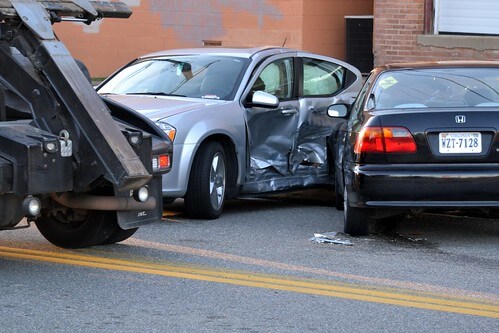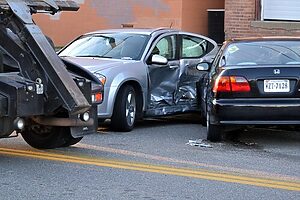- October 29, 2021
- Insurance
- Personal Injury
 As a driver in Michigan, you have several responsibilities that must be fulfilled legally. You need to have a valid driver's license and carry a minimum amount of insurance. If either of these responsibilities is not met, you could find yourself in trouble with the law. You know that you get a driver's license from the Department of Motor Vehicles, but what is PLPD insurance?
As a driver in Michigan, you have several responsibilities that must be fulfilled legally. You need to have a valid driver's license and carry a minimum amount of insurance. If either of these responsibilities is not met, you could find yourself in trouble with the law. You know that you get a driver's license from the Department of Motor Vehicles, but what is PLPD insurance?What Is PLPD Insurance?

PLPD stands for personal liability and property damage insurance. It covers any medical treatments and property damage of the other driver if you were to be at fault in an accident. It does not cover your personal property or your medical treatments for the same accident; that is a different type of insurance coverage that needs to be purchased separately. PLPD is more commonly known as liability insurance, and most states, including Michigan, require drivers to carry a minimum amount of PLPD.
What Is the Minimum PLPD Insurance Coverage in Michigan?
The minimum coverage for personal liability and property damage varies from state to state, and drivers must know the minimum coverage required by law in their state. Michigan drivers need a minimum of $20,000 per person and $40,000 per accident in liability coverage. In addition to this, Michigan drivers must also carry $10,000 in property damage for potential accidents out of state. This coverage is written as 20/40/10 on your insurance policy.
This minimum means that if you're involved in an accident and found to be at fault, your insurance will cover up to $20,000 in medical bills and property damage per person involved in the accident but caps it at $40,000 total. That means that if four people were involved in the accident in the other vehicle, the $40,000 would be split amongst them, at a maximum of $20,000 per individual.
Michigan laws have changed, and as of July 1, 2020, you must choose one of the following protection levels for no-fault medical benefits as a part of your insurance policy:
- $50,000 in medical coverage.
- $250,000 in medical coverage.
- $500,000 in medical coverage.
- Unlimited medical coverage.
- Opt-out of no-fault medical coverage.
Michigan's minimum requirement of 20/40/10 on PLPD would not take long to use up, leaving you financially responsible for any overage. Considering that the average cost of vehicles these days starts around $15,000, you can see that the minimum could be paid out very quickly. Most car insurance companies recommend that you carry $500,000 per person and $1,000,000 per accident to protect your financial future.
What Is Personal Liability?
When you're at fault in a car accident, personal liability covers the medical bills of the other driver and any passengers in their vehicle at the time of the accident. It will also cover any lost wages, chiropractic care, and transportation to medical facilities such as an ambulance ride to the emergency room following the accident.
Here are two examples of how personal liability insurance is applied when you're the at-fault driver:
- One person from the other vehicle was injured, resulting in $28,000 in medical bills and lost wages. Your personal liability coverage will pay for $20,000, leaving you responsible for the remaining $8,000.
- Three people in the other vehicle were injured, resulting in $15,000 in medical bills and lost wages per person. Your coverage will pay a total of $40,000 amongst the three, leaving you financially responsible for the remaining $5,000.
In these examples, it's assumed that the other people do not have any medical payments coverage or personal injury protection.
What Is Property Damage?
In the event of an accident where you're the at-fault driver, property damage insurance covers the damage to the other vehicle(s) involved in the accident. This type of coverage includes cracked windshields, damage to the vehicle's frame, body damage, and popped tires. It will also cover damage to property such as signs, fences, or homes.
In Michigan, the $10,000 in required property damage covers damage to another person's vehicle outside of the state of Michigan because Michigan is a no-fault state. If you were involved in an accident in Ohio, a tort state, you'd be financially responsible for all of the damage to the other driver's vehicle. On a $17,000 vehicle, you'd be responsible for $7,000 in damages if carrying the minimum insurance.
What Is Not Covered by PLPD Insurance Coverage?
It's important to note that personal liability and property damage will only cover the driver, passengers, and property of the other vehicle and not you, your passengers, or your property damage. Coverage that PLPD does not cover includes:
- Collision coverage. This type of insurance coverage pays to repair or replace your vehicle if it's been damaged in an accident in Michigan. Collision coverage is optional to all drivers and is available in four types: broad form, standard, limited without a deductible, and limited with a deductible.
- Comprehensive coverage. Another optional insurance coverage for Michigan drivers is comprehensive, which covers damage to your vehicle caused by something other than an accident. This coverage includes vandalism, theft, flooding, hail, and hitting an animal.
- Uninsured/underinsured coverage. In the event of an accident caused by a driver who's either uninsured or underinsured, this coverage would take over. Underinsured means that the driver's liability limits are too low to cover all of the damages, leaving them exposed to severe financial consequences. UM and UIM are both optional coverages.
- Limited property damage. This mini-tort coverage pays up to $3,000 for repairs to another vehicle that you're at fault for in damaging if the other person's insurance policy doesn't cover the damage. This coverage is also optional.
While all of these coverages are optional and not part of the required PLPD coverage, it's highly recommended that you consider adding these to your car insurance to protect yourself and your property at a higher level.
If you or someone you love has been involved in an accident, reach out to the knowledgeable team at Goodman Acker. We have the experience necessary to navigate the insurance world and get you the damages you deserve. You can reach 24 hours a day, seven days a week by phone, or via our online messaging service.

